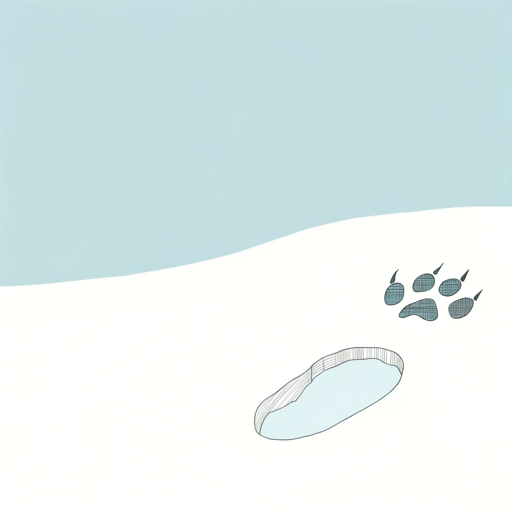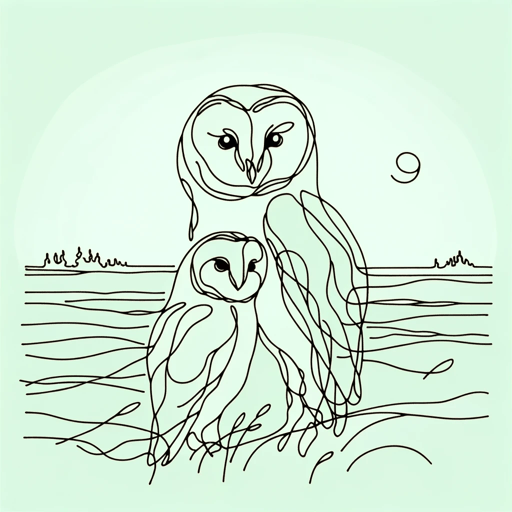55 pages • 1 hour read
Farley MowatNever Cry Wolf: The Amazing True Story of Life Among Arctic Wolves
Nonfiction | Autobiography / Memoir | YA | Published in 1963A modern alternative to SparkNotes and CliffsNotes, SuperSummary offers high-quality Study Guides with detailed chapter summaries and analysis of major themes, characters, and more.
Summary and Study Guide
Overview
Farley Mowat published Never Cry Wolf in 1963. The book is a non-fiction memoir of the 18 months he spent in the Barrens, a treeless area of tundra, studying arctic wolves for the Dominion Wildlife Service. Told that these wolves killed caribou for sport, Farley was surprised to discover that wolves never attacked humans and only culled the deer herds of unhealthy animals. Farley also encountered rampant inefficiency among his government colleagues, which he reports in the often humorous, self-deprecating narrative. The book is credited with changing average Canadian attitudes toward wolves and the arctic ecosystem. Widely read, the book was made into a 1983 biopic of the same name by director Carroll Ballard. Summarized here is the 2001 paperback Back Bay version.
Content Warnings: Farley uses the mid-20th-century term “Eskimo,” to refer to Indigenous Canadians and other Indigenous peoples of the farthest northern reaches of North America. In this study guide, the proper name of these people, “Inuit,” is used.
In Chapter 23, Farley graphically describes a trapped group of 23 caribou slaughtered by hunters from an airplane.
Summary
In the 1993 Preface, written 30 years after the book’s initial release, Farley expresses concern that the Canadian government, at the behest of special interest groups, continues to allow the hunting of wolves, many species of which have already become extinct.
The author traces his curiosity in naturalism to an event in his youth when he tried to preserve three hardy catfish overnight in the bowl of his grandmother’s toilet. Though unsuccessful, his curiosity about animal life compelled him to pursue a college education in biology. Because legitimate scientific opportunities were scarce in Canada in the late 1940s, Farley worked for Dominion Wildlife Services. As the newest employee, he draws the assignment to be the director and sole participant in The Lupine Project, a study of arctic wolves in the Canadian Barrens. Farley understands that the project intends to whitewash continued efforts to eradicate wolves based upon the widely accepted assertion that wolves decimated the native caribou population.
Farley flies from Ottawa to Churchill, Manitoba, with his “desiderata,” the $4000 worth of supplies and equipment assigned to him for his field research. Though he received exacting instructions, he realizes they show little grasp of the realities he will face in the wilderness. Stranded for a time in Churchill, during which he receives a great deal of nonsensical input from local wolf “experts,” Farley finds a new brush pilot who flies him about 300 miles northwest, depositing him and his gear on a frozen lake. With no way of transporting his supplies, Farley encounters a trapper, Mike, with a 14-dog sled team. Mike transports him from the lake and allows Farley to rent his nearby cabin for the project’s duration. Farley establishes his base camp and pitches a forward observation tent. Even after the ice melts and the snow disappears, he does not see wolves.
Upon hearing a husky pup one day, he crosses the river and climbs a ridge, where he finds himself face-to-face with the real source of the sound: a full-grown arctic wolf. The wolf bounds away. Farley tracks the wolf to an esker, where he discovers that the first wolf, whom he calls George, has a mate, whom he calls Angeline. He sees a third adult wolf with them, whom he names Uncle Albert. The wolf pair have four small pups. Deciding to officially observe their habitat and behaviors, Farley pitches his observation tent and “marks” his territory along the wolves’ paths; George responds by marking the area that belongs to the wolves.
Because there are no sizeable game animals in the Barrens during the spring and summer, Farley cannot determine what the wolves are eating. Watching Angeline, who eats more than 20 mice in one hour, then regurgitates them for her pups, Farley decides that wolves subsist on rodents when there is no available large game. To test his theory that large mammals can subsist on mice, he traps and eats the mice that plague the cabin and finds they can be sufficiently nutritious.
Mike returns to the cabin with his cousin, Ootek, who speaks no English. Because of Farley’s interest in wolves, Ootek embraces his investigations. A shaman who claims the wolf as his totem, Ootek understands lupine nature and explains to Farley the meaning of the wolf behaviors he observes. Mike takes many excursions, forcing Farley and Ootek to learn each other’s language to communicate. On one occasion, Mike translates Ootek’s telling of the Inuit creation myth, describing the interdependence of the caribou and wolf.
The wolves move to a new location in the summer because the pups have outgrown the esker den. Farley and Mike decide to breed one of the sled dogs, who is in season, to a male wolf. The pair are inseparable for several days before each returns to its accustomed place.
By traveling about with Ootek and visiting the hunting areas of other wolves, Farley learns that the estimated number of arctic wolves in the Barrens is at most 3,000. Because this contradicts the government’s official estimate of 30,000, Farley knows his report will suffer criticism. During one of their trips, they encounter a small band of Inuit hunting caribou. Ootek goes with them, while Farley remains with the band’s women and children. After swimming naked, Farley sees a pack of three wolves stalking caribou. Wearing only his boots, he follows them and runs after them and several spooked deer. In turn, the Inuit women and children chase Farley, assuming that he has begun to behave irrationally, thrown off his clothes, and decided to assault the wolves. Because describing the wolves’ hunting behavior is essential to Farley’s report, he and Ootek follow wolf packs as the caribou migration from the northern mountains to the southern forests brings them through the Barrens. Ootek explains the various strategies the wolves use to hunt deer. It surprises Farley that wolves are largely ignored as they walk through the caribou. Ootek explains that the wolves evaluate the deer, watching for those who are ill, old, or injured.
As fall approaches, Farley reviews his instructions and attempts to complete as many research directives as possible. Another passing group of Inuit, Ootek’s relatives, observe Farley wearing a gas mask as he dissects wolf scat, and they leave. Not only are the Inuit put off by Farley’s actions, but the white citizens of Brochet, Manitoba, decry him as a “wolf lover” when he explains that wolves are not mankillers, are not decimating the caribou herds, and that there was no accurate report of an arctic wolf ever attacking a human being. When locals protest that nearby wolves have killed 50 caribou just for sport, Farley investigates, discovering that the 23 dead caribous have no marks of wolf attacks but rather gunshots. Trophy hunters in an airplane killed the animals, following which they took only the head and antlers of two of the deer.
Knowing he must conclude his report and return to Ottawa, Farley realizes the government has no idea where he is. When a plane flies nearby, he sets off a smoke bomb, catching the pilot’s attention and allowing Farley to send a message about his location to his superiors. Assuming the wolves’ den to be empty, Farley crawls underground and encounters the silent Angeline and one of her pups. Frightened, he backs out of the den, realizing that he momentarily forgot all he knew about wolf nature. He regrets the modern man he has become, which costs him the harmony of living as one with nature as the wolves do.
Related Titles
By Farley Mowat



